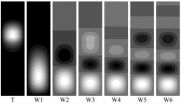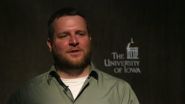(Press-News.org) PHILADELPHIA — Vitamin D deficiency was an indicator of aggressive prostate cancer and spread of the disease in European-American and African-American men who underwent their first prostate biopsy because of abnormal prostate-specific antigen (PSA) and/or digital rectal examination (DRE) test results, according to a study published in Clinical Cancer Research, a journal of the American Association for Cancer Research.
"Vitamin D is a steroid hormone that is known to affect the growth and differentiation of benign and malignant prostate cells in prostate cell lines and in animal models of prostate cancer," said Adam B. Murphy, M.D., MBA, assistant professor in the Department of Urology at the Northwestern University Feinberg School of Medicine in Chicago. "In our study, vitamin D deficiency seemed to be a predictor of aggressive forms of prostate cancer diagnosis in European-American and African-American men.
"The stronger associations in African-American men imply that vitamin D deficiency is a bigger contributor to prostate cancer in African-American men compared with European-American men," added Murphy. "Vitamin D supplementation may be a relevant strategy for preventing prostate cancer incidence and/or tumor progression in prostate cancer patients."
The most accurate way to measure how much vitamin D we have in our body is to measure levels of 25-hydroxyvitamin D (25-OH D) in our blood. The normal range of 25-OH D is 30 to 80 nanograms per milliliter (ng/ml).
In this study, European-American and African-American men had 3.66 times and 4.89 times increased odds of having aggressive prostate cancer (Gleason grade of 4+4 or higher), respectively, and 2.42 times and 4.22 times increased odds of having tumor stage T2b or higher, respectively, if their 25-OH D levels were less than 12 ng/ml at the time of prostate biopsy. In addition, African-American men had 2.43 times increased odds of being diagnosed with prostate cancer, if their 25-OH D levels were less than 20 ng/ml.
Between 2009 and 2013, Murphy and colleagues enrolled 667 men, ages 40 to 79 years, who were undergoing their first prostate biopsy at one of five urology clinics in Chicago following an abnormal PSA or DRE. Serum 25-OH D levels were measured at recruitment. Of the study participants, 273 were African-American and 275 were European-American, and 168 men from each group had a prostate cancer diagnosis from their biopsy.
The researchers found that the mean 25-OH D levels were significantly lower among African-American men (16.7 ng/ml) compared with European-American men (19.3 ng/ml). The highest 25-OH D level was 71 ng/ml in European-American men, while it was only 45 ng/ml in African-American men.
They categorized the study group into those whose 25-OH D levels were less than 12 ng/ml, less than 16 ng/ml, less than 20 ng/ml, and less than 30 ng/ml, and found a dose-response relationship between tumor grade and vitamin D level for both European-American and African-American men, and the association held true even after adjusting for potential confounders including diet, smoking habits, obesity, family history, and calcium intake.
The researchers also found an association between lower 25-OH D levels and those at high and very high risk for prostate cancer, per National Comprehensive Cancer Network (NCCN) criteria, which take into account prediagnosis PSA levels, tumor stage, and Gleason grade.
While no association was found between vitamin D deficiency and prostate cancer diagnosis in European-American men, this association was significant in African-American men. Further, the association with disease aggressiveness and cancer spread was stronger for African-American men than for European-American men. Skin color, which determines cumulative vitamin D levels from exposure to sun, may partly explain the discrepancies observed between European-American and African-American men, explained Murphy.
"We will next evaluate genetic polymorphisms in the pathways of vitamin D metabolism to better understand the risk alleles underlying this association," said Murphy. "Vitamin D deficiency seems to be important for general wellness and may be involved in the formation or progression of several human cancers. It would be wise to be screened for vitamin D deficiency and treated."
Rick Kittles, Ph.D., an associate professor of medicine and epidemiology at the University of Illinois in Chicago, is a co-author and collaborator on this project.
INFORMATION:
This study was funded by the National Institutes of Health and the U.S. Department of Defense. Murphy and Kittles declare no conflicts of interest.
To interview Adam Murphy, contact Erin White at ewhite@northwestern.edu or 847-491-4888. For other inquiries, contact Jeremy Moore at jeremy.moore@aacr.org or 215-446-7109.
Follow the AACR on Twitter: @AACR
Follow the AACR on Facebook: http://www.facebook.com/aacr.org
About the American Association for Cancer Research
Founded in 1907, the American Association for Cancer Research (AACR) is the world's oldest and largest professional organization dedicated to advancing cancer research and its mission to prevent and cure cancer. AACR membership includes more than 34,000 laboratory, translational, and clinical researchers; population scientists; other health care professionals; and cancer advocates residing in more than 90 countries. The AACR marshals the full spectrum of expertise of the cancer community to accelerate progress in the prevention, biology, diagnosis, and treatment of cancer by annually convening more than 20 conferences and educational workshops, the largest of which is the AACR Annual Meeting with more than 18,000 attendees. In addition, the AACR publishes eight peer-reviewed scientific journals and a magazine for cancer survivors, patients, and their caregivers. The AACR funds meritorious research directly as well as in cooperation with numerous cancer organizations. As the Scientific Partner of Stand Up To Cancer, the AACR provides expert peer review, grants administration, and scientific oversight of team science and individual grants in cancer research that have the potential for near-term patient benefit. The AACR actively communicates with legislators and policymakers about the value of cancer research and related biomedical science in saving lives from cancer. For more information about the AACR, visit http://www.AACR.org.
Vitamin D deficiency may be linked to aggressive prostate cancer
2014-05-01
ELSE PRESS RELEASES FROM THIS DATE:
Human fat: A trojan horse to fight brain cancer?
2014-05-01
Johns Hopkins researchers say they have successfully used stem cells derived from human body fat to deliver biological treatments directly to the brains of mice with the most common and aggressive form of brain tumor, significantly extending their lives.
The experiments advance the possibility, the researchers say, that the technique could work in people after surgical removal of brain cancers called glioblastomas to find and destroy any remaining cancer cells in difficult-to-reach areas of the brain. Glioblastoma cells are particularly nimble; they are able to migrate ...
Crocodile tears please thirsty butterflies and bees
2014-05-01
The butterfly (Dryas iulia) and the bee (Centris sp.) were most likely seeking scarce minerals and an extra boost of protein. On a beautiful December day in 2013, they found the precious nutrients in the tears of a spectacled caiman (Caiman crocodilus), relaxing on the banks of the Río Puerto Viejo in northeastern Costa Rica.
A boat carrying students, photographers, and aquatic ecologist Carlos de la Rosa was passing slowing and quietly by, and caught the moment on film. They watched [and photographed] in barely suppressed excitement for a quarter of an hour while the ...
Competition of the multiple Gortler modes in hypersonic boundary layer flows
2014-05-01
The present study illustrates, for the hypersonic flows, through the local and marching analysis, the crossover of the mode W and the mode T at O(1) wavenumber and large Görtler number regime. In fact, it is at this wavenumber regime that the instability is most likely to occur. The two approaches are expected to deliver similar results and the marching analysis helps to express the details of the crossover and confirm the result of the local analysis.
In fact the study of Görtler instability goes back to the date of the 1940s. Since Görtler's pioneering investigation ...
Vitamin D deficiency linked to aggressive prostate cancer
2014-05-01
CHICAGO --- African-American and European-American men at high risk of prostate cancer have greater odds of being diagnosed with an aggressive form of the disease if they have a vitamin D deficiency, according to a new study from Northwestern Medicine® and the University of Illinois at Chicago (UIC).
Results of the study will be published May 1 in Clinical Cancer Research, a journal of the American Association for Cancer Research.
"Vitamin D deficiency could be a biomarker of advanced prostate tumor progression in large segments of the general population," said Adam ...
Extreme sleep durations may affect brain health in later life
2014-05-01
BOSTON, MA – A new research study led by Brigham and Women's Hospital (BWH) published in The Journal of the American Geriatrics Society in May, shows an association between midlife and later life sleeping habits with memory; and links extreme sleep durations to worse memory in later life. The study suggests that extreme changes in sleep duration from middle age to older age may also worsen memory function.
"Sleep Duration In Midlife and Later Life In Relation to Cognition: The Nurses' Health Study," led by Elizabeth Devore, ScD, instructor in medicine in the Channing ...
New UT Arlington research could improve pharmaceuticals testing
2014-05-01
A UT Arlington chemistry professor, renowned for his work in the area of chemical separations, is leading an effort to find a more accurate way to measure water content in pharmaceuticals – a major quality issue for drug manufacturers.
Daniel W. Armstrong, UT Arlington's Robert A. Welch Chair in Chemistry, says the new technique could be 100 times more sensitive than one of the most popular current methods.
"The analysis for water in many consumer products, including drugs, is one of the most required tests done in the world," said Armstrong. "Current methods have many ...
Playing pool with carbon atoms
2014-04-30
A University of Arizona-led team of physicists has discovered how to change the crystal structure of graphene, more commonly known as pencil lead, with an electric field, an important step toward the possible use of graphene in microprocessors that would be smaller and faster than current, silicon-based technology.
Graphene consists of extremely thin sheets of graphite: when writing with a pencil, graphene sheets slough off the pencil's graphite core and stick to the page. If placed under a high-powered electron microscope, graphene reveals its sheet-like structure ...
Ground breaking technique offers DNA 'Sat Nav' direct to your ancestor's home 1,000 years ago
2014-04-30
Tracing where your DNA was formed over 1,000 years ago is now possible due to a revolutionary technique developed by a team of international scientists led by experts from the University of Sheffield.
The ground breaking Geographic Population Structure (GPS) tool, created by Dr Eran Elhaik from the University of Sheffield's Department of Animal and Plant Sciences and Dr Tatiana Tatarinova from the University of Southern California, works similarly to a satellite navigation system as it helps you to find your way home, but not the one you currently live in – but rather ...
Cutting cancer to pieces: New research on bleomycin
2014-04-30
A variety of cancers are treated with the anti-tumor agent bleomycin, though its disease-fighting properties remain poorly understood.
In a new study, lead author Basab Roy—a researcher at Arizona State University's Biodesign Institute—describes bleomycin's ability to cut through double-stranded DNA in cancerous cells, like a pair of scissors. Such DNA cleavage often leads to cell death in particular types of cancer cells.
The paper is co-authored by professor Sidney Hecht, director of Biodesign's Center for BioEnergetics. The study presents, for the first time, alternative ...
Infertile women want more support
2014-04-30
VIDEO:
University of Iowa Communication Studies researchers Keli Steuber and Andrew High talk about infertility.
Click here for more information.
Many women coping with infertility count on relatives or close friends for encouragement and assistance. But according to research at the University of Iowa, when it comes to support, women may not be receiving enough—or even the right kind.
"Infertility is a more prevalent issue than people realize. It affects one in six couples, ...




